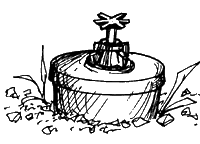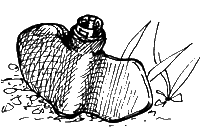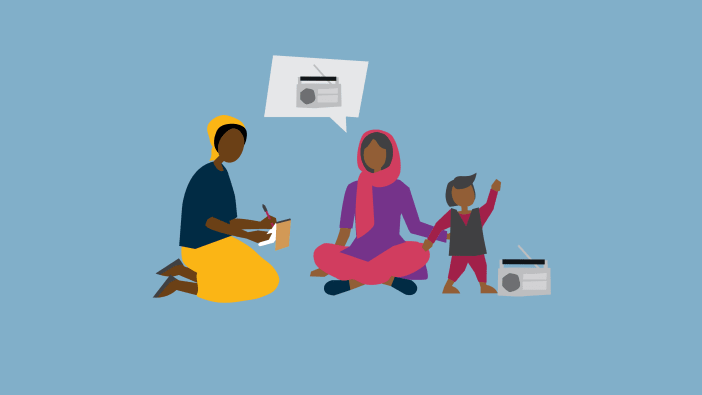Some ideas for role plays
- A group of children have taken the goats to graze. Maria wanders off on her own. She sees a sign with a picture of an explosion and realises she has walked into a mined area. She is very frightened and calls out to her friends. What do they do? How do they help her? What advice can they give?
- Phuong and Hai are walking to school after a heavy rain storm when they see a suspicious object near the path. What will they do? Who will they tell? How will they remember where they saw the object?
- Quy and his brother had been digging for worms for the family ducks when a land mine exploded. The mine killed his brother, took off Quy’s right hand and leg and left him blind in one eye. When he came out of hospital he did not want to go back to school. How did his friends help him?
Encouraging awareness
Teachers can train children to recognise what mines look like. They can help them learn the warning signs (sticks, coloured tape, notices) used to show that a mine is nearby. They may be able to invite mine clearance teams to talk at the school or invite children injured by mines to share their stories.
Most importantly, teachers can help children learn what to do if they see a suspected land mine. Local authorities may use variations in different countries, so always follow the local procedure when available. See the example of a procedure below.
If you're a child and you see a land mine - what should you do? This is a typical procedure, but find out the exact version for use in your country.

Children could draw posters to explain the correct procedures. They could make up role plays, games, songs or poems to help them learn and remember the correct steps. Children should never be encouraged to go looking for mines.
This information is adapted from an activity sheet on land mines prepared by Child to Child, 20 Bedford Way, London, WC1H 0AL. Details of how to obtain more information are on page 15.











